Restoration of upholstered furniture: features and rules of work

Even the highest quality, beautiful and reliable upholstered furniture can wear out over the years. In this case, you can immediately go to buy a new product, or you can repair the old one yourself. Many people resort to the second solution, because it saves money, while returning upholstered furniture to its original presentation. In today's article, we will look at how to properly restore furniture structures, and what are the features of such procedures.
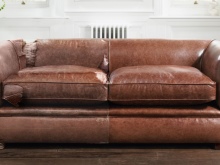
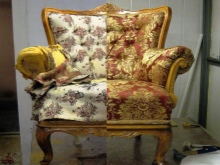
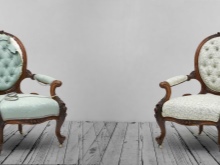
Features of the restoration
Over the years or due to external reasons, upholstered furniture can lose its original appearance, acquire damage and defects. Often, the latter are so serious that users have no choice but to go to the store to buy a new product. However, an equally practical solution is to independently restore the furniture structure.
In most situations, it is the external elements of upholstered furniture that have to be restored. Such problems can concern not only cheap and simple materials, but also expensive, high-quality materials. Over time, the woven fabric of the upholstery can lose its previous color saturation, rub in certain places or even tear. If foam rubber is present as filling in the furniture structure, it can lose its elasticity, sag.
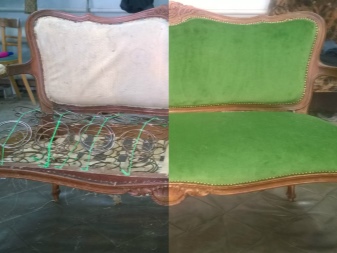
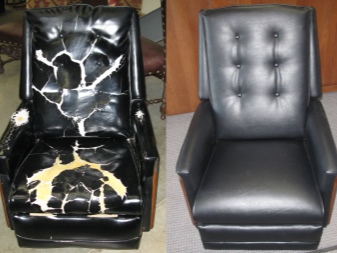
Do-it-yourself restoration of upholstered furniture has many positive aspects:
- new material will cost much less than buying new upholstered furniture;
- in this way it will be possible to preserve antique or dear furniture;
- you can repair the product in such a way that it will ideally fit into the existing interior, meet all the taste requirements of households, because the choice of color and texture of materials will remain with them;
- the owners will be able to independently choose all the necessary materials that meet the requirements of environmental friendliness, safety, quality and cost;
- knowing the weak and vulnerable areas of old upholstered furniture, it will be easier for households to restore and strengthen it.
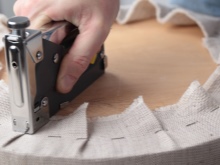
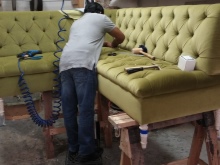
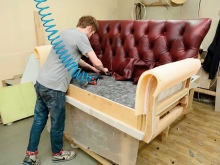
We must not forget that the wear of upholstered furniture does not always turn out to be exclusively external. Over time, the components of the internal structure often deteriorate or wear out. In certain places, an obsessive creak occurs, the folding or retractable mechanism stops working properly, and the springs may break. If the furniture has a wooden base, it can crack or even break.
Before proceeding with the restoration of such products, it is important to know exactly where their problems and defects lie.


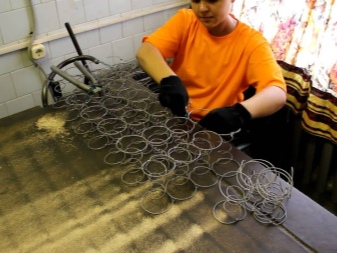
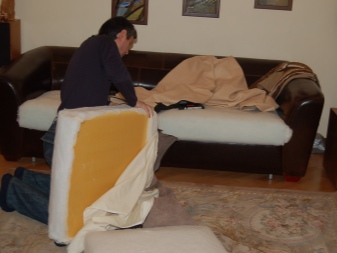
Preparation for work
Before proceeding directly with the repair and restoration of upholstered furniture, it is necessary to carry out all the preparatory work correctly. So, if you plan to return the former beauty to the upholstery of a furniture structure, then it is better to resort to a constriction. You need to decide in advance what kind of material you would like to see on the product - textiles or leather. Such materials are suitable for constriction.
- Leather. This material is able to give furniture a particularly chic and attractive look. But experts do not recommend purchasing too dense natural leather for restoration. It is desirable that the thickness of the material is no more than 3 mm - such a covering will not be elastic enough.
- Artificial leather. An attractive material that looks very similar to natural, but costs less than it. Leatherette is durable, easy to work with - it is malleable.
- Textile. To update the upholstery of upholstered furniture, you can choose a variety of fabrics with different structures and external parameters.
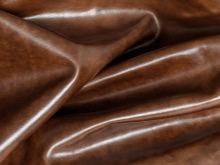
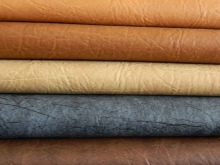
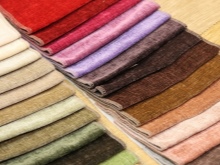
Having picked up the ideal and favorite material, you can proceed to the first steps in the restoration of furniture. Often people have to deal with the restoration and renovation of the frame of upholstered furniture. Before starting the basic procedures, in this case, it is necessary to carefully remove the old coating. Next, you will definitely need to do the preparatory grinding of all the wooden parts of the base. If it is necessary to replace certain elements in the furniture device, it is important to carefully inspect the state of the frame, all existing connections in advance, so that later on during assembly you will not encounter problems.
Inspection and disassembly of the frame will have to be resorted to in the event that you need to tackle the upholstery of the product. When carrying out these works, it is important to remember in what sequence they are performed. It will also help to avoid many drawbacks.
If we are talking about replacing spring furniture parts, you will first need to remove all remaining parts of the upholstery from the frame. The structure should be free of nails, staples and other fasteners. The body is always polished, washed, painted.
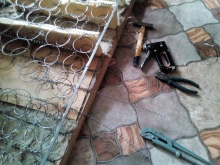

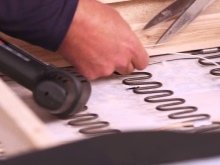
Specific preparatory work largely depends on which part of the upholstered furniture you need to restore and update. The main thing is to act carefully and slowly. The preparatory stage should not be neglected - it is very important. At the preparation stage, you need to stock up on all the necessary tools. Here are some of them that turn out to be necessary for most of the restoration work:
- a drill that comes with special attachments;
- chisels (it is recommended to prepare several pieces - from 4 to 40 mm);
- a plane for the end parts of furniture structures;
- mallet;
- clamps;
- hammer;
- nail puller;
- flat and Phillips screwdrivers;
- jigsaw (both manual and electric are suitable);
- level, ruler, square;
- knife and hacksaw for metal;
- multi-size pliers;
- stapler for furniture with staples, the size of which is from 2 to 30 mm .;
- file;
- rasp;
- scissors.
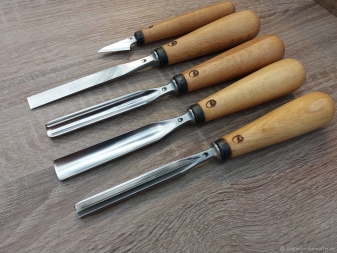
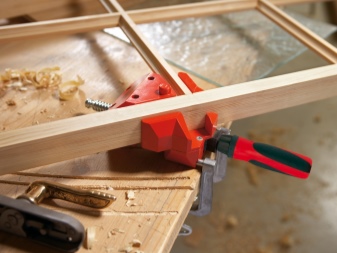


Stages of work
The procedure for renovating damaged upholstered furniture depends on what exactly needs to be put in order. Consider the steps that make up the restoration work in the case of updating the upholstery and repairing the mechanism.
- The first step is to dismantle the old upholstery material.
- Next, you need to check the condition of the furniture padding. Often, users have to resort to replacing it, as it can lose its original elasticity.
- The dismantled cladding can be used as a pattern to obtain perfectly matching fresh cladding details.
- The next step is to cut the new material. It is advisable to make impressive stocks of allowance.
- If necessary, the packing material must be replaced.
- The sheathing should be applied to the areas of the structure, fixed with a stapler. The staples are required to be exposed, maintaining a distance of 2 cm.
- When working with upholstery, make sure that the material does not crumple, gather in folds, or shift to the side.
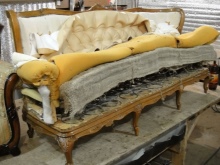
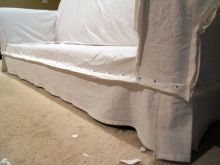
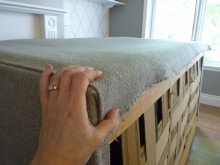
If all the work is carried out correctly, without departing from the instructions, then the owner himself will notice the result obtained after the restoration. The upholstered furniture that has just been dragged will take on a completely different, more aesthetic new look. Often in the design of upholstered furniture, especially if it is old, the spring component fails. At the same time, the frame itself remains in order and does not need any modifications. It so happens that a number of springs are covered with cracks.
In such a situation, you will have to resort to replacing these parts.When it comes to the wear of the entire mechanism, partial replacement of the damaged parts will not be enough.


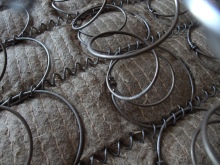
The restoration process in this case can go in 2 ways.
- If the base of the frame part is plywood, wood or other (solid) and does not need to be replaced, then new named elements are usually installed at the points of attachment of the dismantled springs. In this case, both the distance and the previous number of brackets of the structure must be preserved.
- If the base is made of slings, then restoration procedures begin with their replacement. First you need to nail one side of the sling, pull it to the opposite side, and then secure it securely. In this sequence, the entire row must be installed parallel to each other. Then weaving is done with other slings, which are perpendicular to the first.

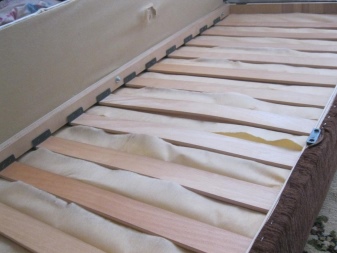
It is necessary to attach the springs to the slings by sewing them in 3 places, maintaining the same distance and using a very strong rope. After that, around the perimeter of the cabinet part of the furniture, 2 nails must be hammered at the end of each row of slings. A thread must be attached to these nails, which connects the upper lines. This process will consist of the following steps.
- The twine must be folded in half. In the area where the fold is located, a loop is constructed around the nails. It is necessary to tighten the ends and drive in the fasteners until they stop.
- Both ends of the rope in turn should be pulled through all the springs of the row, preparing 2 knots on each in opposite sections of the loop, which is on top. Keep the same distance between the blocks of the block.
- Following the same pattern, fasten the rest of the springs. The threads should be placed in 2 directions as well as diagonally. As a result, each element will be held together by threads of 6 pieces. All parts should be tightened as tightly as possible in 3 directions.
- Having formed the correct mesh, you will need to carefully lay out a dense woven layer on top of the spring block.
The procedure for the restoration of the upholstered furniture mechanism can be considered almost complete. It remains only to drag it with the new selected material, if necessary.
How to replace the springs in the sofa in stages, see the video.













The comment was sent successfully.